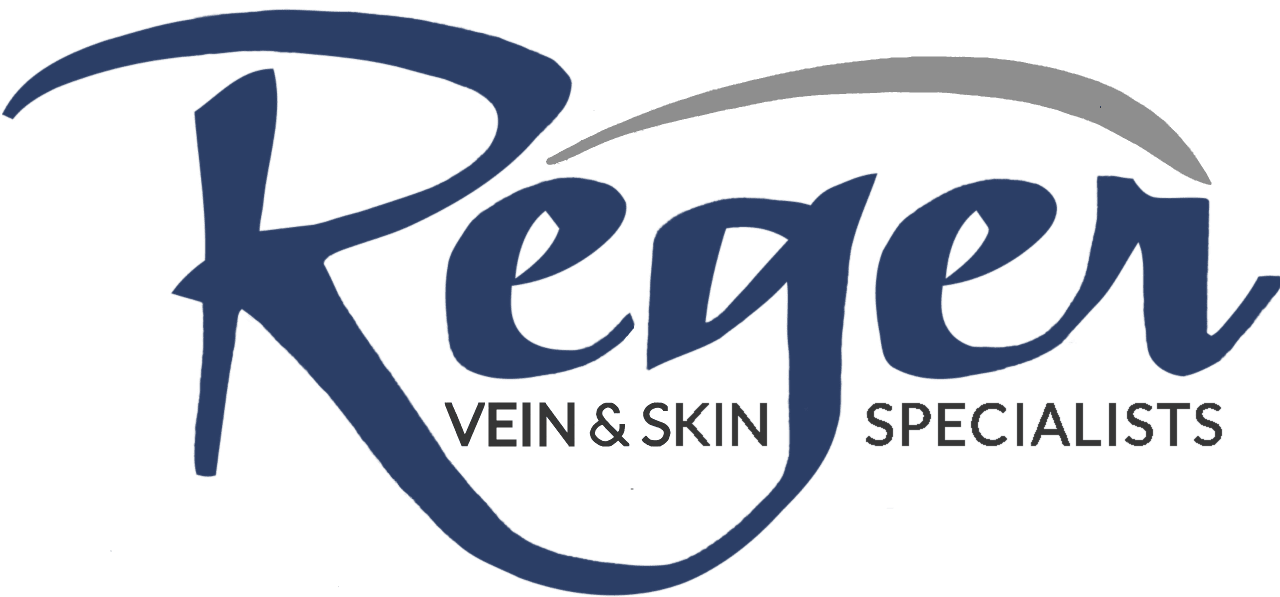 If you are one of the many people suffering from varicose veins, you may have heard of ambulatory phlebectomy as a treatment option. But what exactly is ambulatory phlebectomy, and how does it work? In this blog post, we will take a close-up look at the process of ambulatory phlebectomy, including what happens during the procedure, what to expect before and after, and more. Reger Vein and Skin Specialist led by Dr. Gregg Reger provides ambulatory phlebectomy to patients in The Woodlands, Spring and Houston TX.
If you are one of the many people suffering from varicose veins, you may have heard of ambulatory phlebectomy as a treatment option. But what exactly is ambulatory phlebectomy, and how does it work? In this blog post, we will take a close-up look at the process of ambulatory phlebectomy, including what happens during the procedure, what to expect before and after, and more. Reger Vein and Skin Specialist led by Dr. Gregg Reger provides ambulatory phlebectomy to patients in The Woodlands, Spring and Houston TX.
Understanding Varicose Veins and Treatment Options
Varicose veins, those prominently visible, bulging veins often appearing in the legs, can be more than just an aesthetic concern. For many, they represent discomfort and a range of unwelcome symptoms, including pain, swelling, and a heavy sensation in the limbs. Caused by weakened or damaged valves in the veins, this condition allows blood to pool or flow in the wrong direction, leading to the veins’ enlargement.
For those seeking relief, the medical field offers a variety of treatments, each tailored to the severity of the condition and the patient’s specific needs. Compression therapy, using specially designed stockings to improve blood flow, is among the most conservative approaches. Lifestyle changes, such as exercise, elevating the legs, and avoiding long periods of standing or sitting, can also mitigate symptoms.
For individuals seeking more definitive solutions, several minimally invasive procedures are available, with ambulatory phlebectomy standing out as a particularly effective option for removing superficial varicose veins. This procedure is ideally suited for veins that are too large for sclerotherapy, a treatment that involves injecting a solution into the vein, and too small for endovenous laser therapy, which closes the vein using heat.
Ambulatory phlebectomy offers a unique blend of minimal downtime and high efficacy, making it an attractive option for those looking to address their varicose veins more directly. By understanding the nature of varicose veins and the spectrum of treatment options available, patients can engage in informed discussions with their healthcare providers to choose the best course of action for their individual situation.
The Initial Consultation – Setting the Stage for Success
Embarking on the journey to alleviate the discomfort of varicose veins through ambulatory phlebectomy begins with a crucial first step: the initial consultation with a vein specialist. This meeting is instrumental in laying the groundwork for a successful treatment outcome. During this pivotal appointment, your specialist will conduct a thorough examination of the affected veins, taking into account their size, location, and severity. This examination often involves an ultrasound to precisely map the venous structure and assess the functionality of the vein valves, providing a comprehensive overview of your varicose vein issues.
In addition to evaluating the physical aspects of your varicose veins, the vein specialist will delve into your medical history and current symptoms. Understanding your overall health, any underlying conditions, and your previous attempts at treating varicose veins, if any, helps tailor the treatment plan to your specific needs. This conversation is also an opportune moment for you to voice any concerns or queries regarding the procedure, recovery, potential risks, and expected outcomes.
Determining if you are an ideal candidate for ambulatory phlebectomy involves assessing several factors, including the size and location of the veins, your overall health, and your treatment goals. It is also a time when the specialist will outline what you can do to optimize your results, such as lifestyle adjustments or pre-procedure preparations.
This initial consultation is more than just an assessment; it is a collaborative process. It’s an opportunity for you to understand the nature of your condition, the specifics of the ambulatory phlebectomy procedure, and how it fits into the broader spectrum of varicose vein treatments. By establishing clear communication and setting realistic expectations, this first step ensures that both you and your vein specialist are aligned in your goals for treatment success.
Preparing for Your Ambulatory Phlebectomy Procedure
As the date for your ambulatory phlebectomy approaches, taking the right preparatory steps is essential for ensuring a smooth procedure and optimal results. Your healthcare provider will guide you through specific preparations tailored to your case, which may involve both medical and practical considerations.
Firstly, you might be advised to temporarily stop taking certain medications or supplements, especially those that can increase the risk of bleeding, such as aspirin, ibuprofen, and certain herbal supplements. It’s crucial to discuss all medications and supplements you’re taking with your doctor well in advance of your procedure.
Next, consider your attire for the day of the procedure. Choose loose, comfortable clothing that will not constrict the treated area, making it easier for your healthcare provider to access the site and for you to feel comfortable post-procedure. Additionally, you will likely need to wear compression stockings immediately after the procedure, so wear something that accommodates these garments.
Personal preparations also include arranging transportation for the day of your ambulatory phlebectomy. Since you’ll receive a local anesthetic, you should feel relatively normal after the procedure. However, it’s wise to have someone drive you home to ensure your safety and comfort.
Lastly, follow any specific instructions your vein specialist gives regarding eating or drinking before your procedure. While ambulatory phlebectomy is minimally invasive and typically performed under local anesthesia, individual providers may have varying guidelines on pre-procedure fasting or restrictions.
By adhering to these preparatory steps, you are not only ensuring your safety and comfort but also contributing to the effectiveness of the treatment. Your cooperation with these guidelines reflects your commitment to achieving the best possible outcome from your ambulatory phlebectomy.
The Ambulatory Phlebectomy Procedure Explained Step by Step
Upon arriving at the designated medical facility, the area targeted for your ambulatory phlebectomy will first be meticulously cleaned to ensure a sterile environment, minimizing the risk of infection. Following this preparatory step, a local anesthetic is administered, numbing the treatment area to provide comfort throughout the procedure, ensuring you feel no pain while the varicose veins are being removed.
The next phase involves your vein specialist making strategic, tiny incisions or punctures along the affected vein. These incisions are small—often no larger than a needle’s width—allowing for minimal scarring and the avoidance of sutures. Through these openings, a specialized instrument, akin to a hook, is carefully inserted to grasp and extract the problematic vein segments from under the skin. This technique is meticulously performed, with the specialist guiding the tool to effectively remove the varicose veins while preserving surrounding tissues and minimizing any potential discomfort.
Throughout the procedure, the specialist will methodically work through the predetermined areas, addressing each targeted vein with precision. Despite the invasiveness of making incisions, the process is remarkably gentle on the body, thanks to the local anesthesia and the minimally invasive nature of the technique. Patients remain awake, able to communicate but insulated from pain by the numbing effects of the anesthesia.
Once the removal of the varicose veins is complete, the small openings in the skin are typically left to heal naturally without the need for stitches, thanks to their minuscule size. A sterile dressing is applied over the treated areas to protect them in the immediate aftermath of the procedure. With the veins successfully extracted, blood flow is rerouted to healthier veins, alleviating the symptoms associated with varicose veins and improving circulatory efficiency.
This detailed walk-through of the ambulatory phlebectomy aims to demystify the procedure, showcasing its straightforward, yet effective approach to varicose vein treatment. By removing the troublesome veins directly, this method offers a tangible solution to those suffering from the discomfort and aesthetic concerns varicose veins often bring.
What to Expect After Ambulatory Phlebectomy
Following the completion of your ambulatory phlebectomy, it’s common to encounter some degree of bruising, swelling, and slight discomfort around the areas where veins were removed. These symptoms are a natural part of the healing process and typically diminish within several days to a week. To facilitate recovery and enhance comfort during this period, your healthcare provider will likely recommend the use of compression stockings. These specialized garments play a crucial role in supporting venous circulation, reducing swelling, and preventing blood clots.
In addition to wearing compression stockings, it’s advisable to moderate your physical activities post-procedure. While heavy lifting and vigorous exercise should be avoided during the initial recovery phase, engaging in gentle walks is encouraged to promote blood flow and aid in the healing process. Your vein specialist will provide guidance on when it’s appropriate to gradually resume more strenuous activities based on your individual healing progress.
It’s also important to closely follow any specific aftercare instructions provided by your healthcare provider, including the care of the treatment sites and signs of complications to watch for. Keeping the treated areas clean and monitoring for any unusual symptoms are key steps in ensuring a smooth and effective recovery.
Most patients find that they can return to their regular daily routines within a day or two, with minimal disruption to their personal and professional lives. As the healing process continues, you’ll likely notice a significant improvement in the appearance of the treated areas, as well as relief from the discomfort and symptoms associated with varicose veins, ultimately enhancing your quality of life and confidence in your vein health.
For More Information contact Reger Vein and Skin Specialists in The Woodlands, TX
For more information on procedures and treatments offered by Board Certified Phlebologist Dr. Gregg Reger at Reger Vein and Skin Specialists please call 832-585-0090 or click here to contact our team. Helping patients in Houston, The Woodlands, Springs, Katy and other surrounding areas of Texas.


